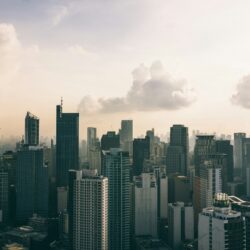Grenfell Tower: The Missing Social Dimension of Fire Regulations

“Fire safety cannot be left to engineers alone. It must start from questions about who is going to be living in this building and how are they going to use it.” (Photo: Natalie Oxford/CC BY 4.0/ Wikimedia Commons)
It is difficult to blog about a human tragedy on the scale of the Grenfell Tower fire in London without risking a sense that this is being exploited for other purposes. On the other hand, if the right lessons are not learned, then the appalling death and suffering have truly been in vain. While an independent public inquiry has been announced, there is a danger that the results will be a technical fix through the same processes that created the problem in the first place. The fire regulations, the property management regime and the very architecture of the building embedded assumptions about the occupants in ways that destined them to fail.
The fundamental problem is that the governance of construction in high-rise social housing is devised by comfortable and rational engineers, lawyers, architects and other professionals. They assume that the occupants of the building will be people like themselves, who will use the building in the way that they would use it. This assumption works reasonably well in private high-rise buildings, although it still embeds risk. However, the further that the occupants are removed from the lifestyle and professional rationality of the designers, the more those risks increase. There is currently no formal process for recognizing the risks and designing to minimize them. The panicked inspection of construction techniques, particularly cladding materials, will not address this. What we urgently need is a better understanding of the interactions between occupants and buildings.
For example, the fire signage all appears to have been in English. The language and formats are prescribed – but make no reference to the actual language skills and fluency of a block full of people who are not native speakers. Thinking about escape provisions seems to have assumed that residents would be reasonably fit, active and able-bodied: by its nature, social housing tends to be occupied by people with various degrees of physical and mental disability. One of the most distressing sights at Grenfell Tower was a blind man on an upper floor begging for rescue. The occupancy is unpredictable. Social housing often accommodates larger families and younger children. People come and go. Parents cannot monitor all their small children in an escape – at least one seems to have died because he let go of his mother’s hand while she was trying to carry younger siblings.
Official thinking also appears to be based on a model of household autonomy and legal privacy that is not completely consistent with safety. In an SLSA blogpost, Ed Kirton-Darling has drawn attention to the legal uncertainties about whether and when block owners have a right to enter properties and to inspect them for modifications that would compromise fire protections. Have smoke alarms been disabled or fire-resistant doors been removed or wedged open? If we house students in high-rise blocks, we try to train them in evacuation procedures with regular fire drills and alarm tests – but the obligations in relation to private or rented housing seem to be much weaker. We assume hotels will be full of transients, so staff are trained to help them get out of the building in an emergency. Who would perform that functions for a social housing tower? The institutions that respect tenant privacy also compromise their safety.
None of these are unpredictable contingencies – but they do not find their way into the design and governance processes for fire safety. The technology needs to be driven by the users, rather than expecting the users to fit the technology. It is not a matter of different cladding materials or retrofitting sprinkler systems. Sprinklers bring their own problems. The effect on the building’s structure of the weight of water needs to be considered. There are significant causes of fire where it is not a good idea to use water to put them out.
Fire safety cannot be left to engineers alone. It must start from questions about who is going to be living in this building and how are they going to use it. What will it take to minimize the risks of fire starting in the course of interactions between these occupants and this building? If the occupants change, the risks need to be reassessed. Social scientists need to step up and get involved rather than just bemoaning the consequences of poor processes.
User-centred design is becoming familiar in many other areas. It needs to be adopted here. Users must be engaged with the processes of developing regulations and creating governance regimes. The designers need to look at what people are actually doing in the building environment and to think how safety can be built around this. We must get away from the attitude of one leading architectural practice: they designed a campus building assuming paperless offices and then complained about academics installing filing cabinets and spoiling the aesthetics of the windows! Buildings are for the people who live and work in them, not for the sensibilities of architects.
The Grenfell Tower inquiry will be failing in its duty if it does not give as much attention to the social causes of the disaster as to the technical. One of its outcomes must surely be a requirement to engage building users more directly in developing regulations and in carrying out risk assessments. More contentiously, perhaps, it will also need to consider whether traditional assumptions about the legal integrity of the English home are really compatible with the collective security of residents in apartment blocks. Has that balance been properly struck?



























































































